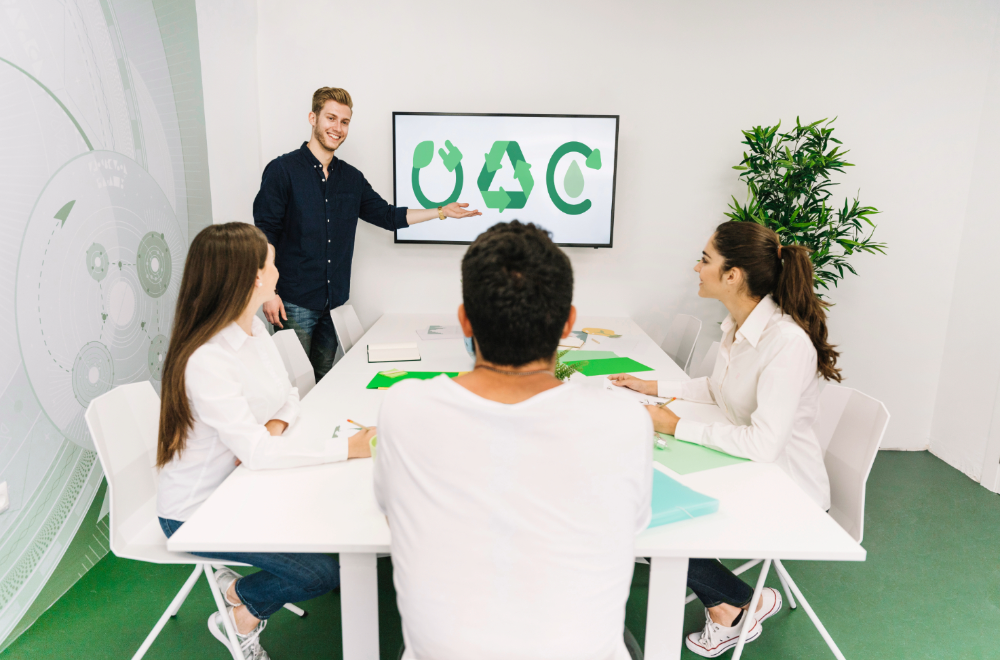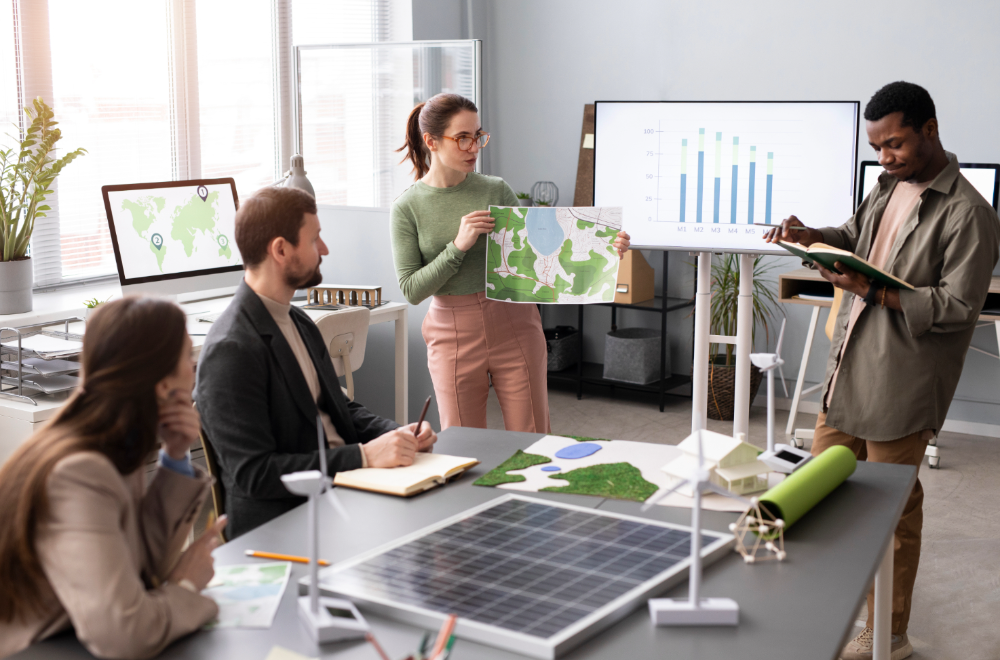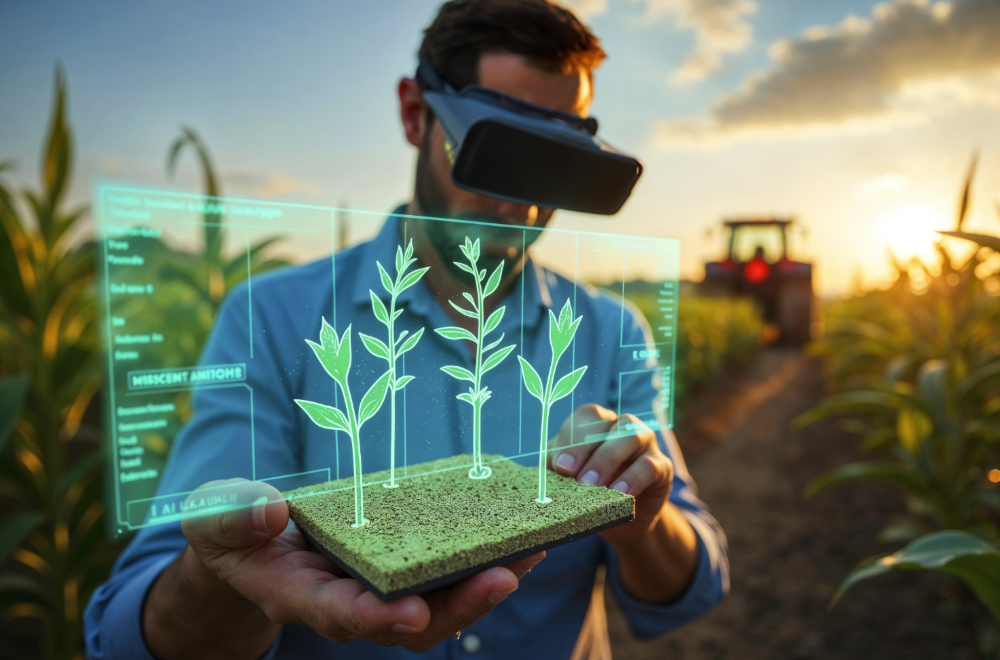Overview
Starting in 2025, sustainability and the circular economy will change the way companies work and grow. With more people caring about the environment and wanting businesses to act responsibly, companies need to change their ways or they might fall behind.
Comprehending the Circular Economy and Sustainability

The goal of sustainability in business is to behave today without having an adverse effect on future generations. This means minimizing environmental damage, promoting social fairness, and ensuring long-term viability for businesses.
The circular economy, reverses the conventional take-make-waste methodology .It prioritizes recycling, reuse, and the rejuvenation of materials and resources. The goal of this approach is to reduce waste and maximize what we have.
| Key Concept | Traditional Economy | Circular Economy |
|---|---|---|
| Resource Use | Linear: extract, produce, dispose | Circular: reduce, reuse, recycle |
| Waste | High | Minimized or eliminated |
| Value Chain | One-time use | Continuous value recovery |
Why Sustainability is Important in 2025
With climate change getting worse, resources running low, and new regulations coming in, businesses really need to focus on sustainability. Here’s what’s happening in 2025:
- Governments are putting stricter environmental rules in place.
- Customers are selecting environmentally conscious brands.
- Investors are looking for companies that do well in Environmental, Social, and Governance areas.
- Workers like to work for organizations with a defined mission.
If businesses don’t start being more sustainable, they could hurt their reputation, find it harder to compete, and face more risks.
Reasons to Take the Circular Economy Into Account
There are several obvious benefits of moving to a circular economy:
- Save Money: Production and disposal expenses can be reduced by reducing waste and reusing materials.
- Think Create: Innovative concepts would be activated by producing long-lasting and recyclable products.
- Be Tough: You will better cope into such troubleshooting of the supply chain with circular approaches.
- Develop Your Reputation: Demonstrating concern for the environment helps in the gaining of people’s trust.
| Circular Practice | Business Benefit |
| Product-as-a-Service | Recurring revenue and customer loyalty |
| Remanufacturing | Lower production costs and resource usage |
| Recycling Programs | Waste reduction and community engagement |
Examples of Circular Economy in Action
- Patagonia has a used clothing repair and resale program called Worn Wear, in which it participates.
- In a light-as-a-service arrangement, Philips does ownership and ensures everything eventually goes back to be recycled.
- IKEA has take-back programs and makes its products easy to disassemble and reuse.
These are companies doing their thing for the environment while differentiating themselves in the industry.
Implementing Sustainable Practices in Your Business

- Conduct a Sustainability Audit
- Evaluate carbon footprints, energy usage, and waste.
- Design Products for Longevity
- Focus on modular designs, sustainable materials, and repairability.
- Rethink Packaging
- Biodegradable or recyclable materials that will cause a reduction of waste going to landfills.
- Engage Stakeholders
- Involve suppliers, employees, and customers in sustainability goals.
- Track and Report Progress
- Make use of frameworks such as GRI (Global Reporting Initiative) or B-corp certification.
Challenges to Overcome
Making the big leap to sustainability and circularity can potentially have its challenges for businesses:
- Starting Cost hiked Investment: Initial investment in new sustainable technology and a redesign can be prohibitively expensive.
- Cultural Resistance: An organization takes long to change its mindset.
- Multiple Regulatory Systems: Raises a nightmare when different environmental laws have to be interpreted across markets.
But, most likely, overcoming those hurdles in the end is worthwhile.
Future Trends Shaping Sustainable Business

- AI for Resource Optimisation IoT: Smart sensors will measure live-use resources.
- Blockchain for Supply Chain Transparency: Verifies ethical sourcing and waste reduction.
- Eco-Friendly Consumer Products: Biodegradable goods and a zero-waste box will rule the market.
- Green finance: Sustainable investments or ESG funds are on the rise.
Conclusion: The Way Ahead
In 2025, including the concepts of the circular economy and sustainability is essential, not optional. Businesses who take the lead in this kind of change will benefit the environment while fostering technology, client loyalty, and long-term viability.
This kind of change is completely visionary and calls for quick thinking, dedication, and hard work. However, everyone will be rewarded with a world where nature and business coexist together.
FAQs
A1: A circular economy focuses on reducing waste by reusing, repairing, and recycling existing materials and products. Unlike the linear model of “take, make, dispose,” it promotes long-term sustainability through resource efficiency.
A2: Sustainability helps businesses reduce costs, meet consumer demand for eco-friendly products, comply with regulations, and build long-term brand trust and resilience.
A3: Small businesses can start by using recyclable packaging, sourcing local materials, offering product repairs, or creating take-back programs to recycle old products.
A4: Fashion, electronics, food, and manufacturing industries benefit greatly by reducing waste, reusing materials, and optimizing resource use.
A5: Yes, businesses often see lower operating costs, increased customer loyalty, access to new markets, and potential tax incentives or funding opportunities.

